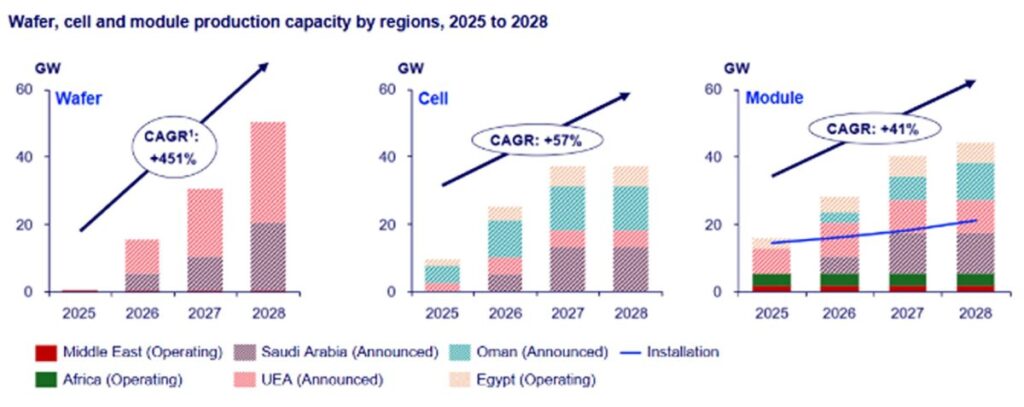Wood Mackenzie predicts that the Midden -Oost and Noord -Africa region will arise as a tariff paradise and to overtake Southeast Asia as a top export hub for solar energy and the primary exporter from solar panels to the US will be towards the end of this decade.
The Solar Manufacturing region in the Middle East and Noord -Africa (Mena) is expected to reach 44 GW in 2029, according to analysis of Wood Mackenzie. The consultancy also expects the installations in the region to exceed 140 GW by the end of the decade.
The analysis of Wood Mackenzie adds that the Mena region pops up like a Tarief Paradise for solar production thanks to the relatively low basic rate of 10% on solar modules that are imported into the US, giving producers in the region an advantage over others with tasks of up to 651%.
Yana Hryshko, senior analyst and head of Global Solar Supply Chain Research at Wood Mackenzie, said that the tariff advantage is a “game changer” for the Mena region.
“It positions the region to offer the most cost-competitive solar modules for the American market,” she explained. “As a result, Mena Zuidoost -Asia will replace the primary exporter from solar panels to the US, making it possible to reform the worldwide sunburns.”
The growth in the capacity of the solar panel of the Mena region is powered by local content requirements and strategic partnerships with Chinese companies, Wood Mackenzie added. In 2028, the Chinese companies are expected to represent more than 85% of Mena’s production capacity The production capacity of the solar module, which positions the region as the next large production base of China outside of Asia.
The growth also benefits the domestic market of the region. Wood Mackenzie predicts that the production capacity of the region of the region will be sufficient by 2026 itself.
Hryshko added that Mena’s vertically integrated and cost-competitive approach to solar production distinguishes the region from “fragmented strategies” that can be seen in markets, including the United States, India and Southeast Asia.
The solar strategy of the region is aimed at large -scale, long -term growth that is stimulated by robust government support, the analysis of Wood Mackenzie continues and gives priority to the use of advanced technologies and the scaling up, other focus on short -term or strict localization.
“Mena’s solar ambitions reform the global landscape of the solar industry and mark a decisive shift of dependence on fossil fuels,” concluded Hryshko. “The region is not just overtaking; it is a new benchmark for integrated solar production.”
This content is protected by copyright and may not be reused. If you want to work with us and reuse part of our content, please contact: editors@pv-magazine.com.

